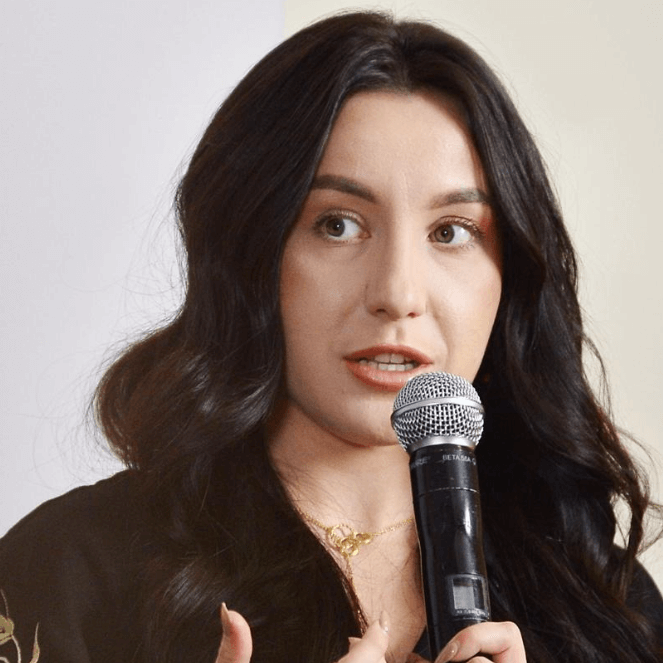On April 7, Channel 112 aired a news story dedicated to the Ministry of Healthcare of Ukraine, problems with treatment of serious diseases, the work of ambulances, international medical procurement and healthcare reform in general. In the 24-minute long piece, Channel 112 journalists together with experts and politicians criticize the Ministry of Healthcare and claim that Ms. Suprun is destroying Ukrainian healthcare. VoxCheck has found at least 10 manipulative and false statements in the story. We are urging the journalists to check the information before such stories are aired.
The material was created within the framework of the project “Do not Believe Myths” with the support of the International Renaissance Foundation.
Myth 1. On Heathcare System Model
Lie
“Ulana Suprun stated right away (after becoming acting minister – editor’s note) that Ukrainian healthcare system had no chance and could not be resuscitated. The only way out was to build an American-type model.”
6:18-6:28
We have not found any confirmation that Ulana Suprun is planning to build an American model of healthcare system. On the contrary, she stressed on numerous occasions that the Ministry of Healthcare borrowed the practice of European countries as well as that of Canada and Great Britain and was building its own mixed healthcare system. For instance, in her interview with the ВВС in January 2017 (Suprun became the minister in August 2016) she stated that Ukraine should have not an American healthcare model but a system “similar to British”. In January 2019, on her Facebook page Suprun described all the disadvantages of the American model and confirmed, “this is not a system that is being built in Ukraine.”
Myth 2. On Emergency Medical Care system
Manipulation
“Doctor Suprun started clearing out the space for her innovations. She started the reforms from emergency medical care. Now, an ambulance will only come to you if your body temperature is 40 degrees. Patients should deal with other problems themselves.”
6:30-6:46
In reality, neither Suprun, nor anyone else introduced such changes into emergency medical care system. Since 2009, we have had a list of symptoms, which may indicate the need for emergency medical care, approved by the Ministry of Healthcare Order No.307. These include, among others, rapid respiratory disorder, loss of consciousness, chest pain, severe external bleeding. This means an ambulance comes not only if you have high temperature.
As far as acute respiratory diseases are concerned, the ambulance will not come to such patients as it is assumed they can get to the doctor themselves if needed. This is a popular practice in the Western countries, namely Scandinavian and Baltic states, Great Britain, Germany and others.
At the same time, in Ukraine we are still reporting up to 70% incidental calls when people call the ambulance because of high blood pressure, a slightly higher body temperature than normal or common headache. In such cases, a person can come to the hospital themselves or just call the family doctor.
Myth 3. On New Ambulance
Lie
“…in case of serious threat to life, the task of new (Ukrainian – editor’s note) ambulance is only to bring a patient to the nearest hospital.”
7:33 AM-7:40
Pursuant to Article 35 of the Law of Ukraine on the Fundamentals of Ukrainian Healthcare Legislation, the ambulance not only brings a patient to the nearest hospital. Emergency medical aid foresees provision of “emergency organizational, diagnostic and treatment measures aimed at saving the life of an individual in emergency state and minimization of the impact such a state may have on their health”. The Ministry of Healthcare (MoH) is indeed referring to this specific law in its materials as well as to Order No. 370 approved back in 2009, long before Ms. Suprun was appointed.
Myth 4. On the Swiftness of Emergency Medical Aid
Lie
“Patients are delivered to hospitals within 10-15 minutes maximum in the US, while in Ukraine it may take an hour or an hour and a half. Don’t forget the traffic jams, not to mention dirt roads in villages. And the competence of paramedics is to provide help within the first 15-20 minutes maximum, after which a qualified specialist should join in.”
7:50-7:58
Pursuant to the norms set out in the MoH Order No, 370 of 2009, emergency medical aid shall be provided within 10 minutes in urban areas and within 20 minutes in rural areas. This, of course, does not rule out cases when ambulances come to patients with a delay.
MoH study of 2018 (the methodology for which was approved by WHO) showed that
- the average response time of ambulances from the time a brigade has received a call to their first contact with the patient makes up 8.5 minutes;
- 56% have the response time of under 10 minutes:
- 94% of all calls have the response time of under 20 minutes.
In the US there is no single federal law that would establish the requirements for response time of an ambulance. American studies show that in cities ambulances come in 7 minutes from the time of call on average and in rural area the time is 14 minutes. At the same time, there are reports of cases when ambulances came in 30 minutes.
Myth 5. On Tuberculosis Dispensaries
Lie
“She (Ulana Suprun – ed.) stated that tuberculosis should be treated on outpatient basis, that we didn’t need dispensaries, treatment facilities and TB control offices. And so they started shutting it all down. Just look – in Kyiv we no longer have Pecherskyi, Shevchenkivskyi and Solomianskyi tuberculosis dispensaries.”
16:06-16:25
Ulana Suprun indeed claimed that as part of healthcare reform medical institutions would switch to outpatient treatment of tuberculosis as a more client-centric one. What is not true is that tuberculosis dispensaries were shut down by her order. Back in 2013 (long before Suprun was appointed), Pecherskyi, Shevchenkivskyi and Solomianskyi dispensary departments were merged and a Phthisiatry Territorial Medical Union was created.
Myth 6. On International Procurement
Exaggeration
“The first really serious step in this direction (fight against pharmacological mafia – ed.) was made by Suprun’s precedecessor Sandro Kvitashvili. During his time in office, public procurement of medications was for the first time done via such international organizations as Crown Agents, UNICEF and the UN. In her turn, Ulana Suprun introduced state monopoly for public procurements of medications from international mediators.”
16:44-17:04
Public procurement of medications through the three international organizations started in 2015 when Kvitashvili was in charge. During Suprun’s time in office the list of programmes under which international mediators (the same ones) conduct procurement has been expanded: they are now procuring medications practically under all state-run programmes.
But can handing over the procurement to international organizations be called monopoly? In fact, no.
First of all, international organizations are conducting procurement using state budget money, i.e. national. They are also procurements made with local budget funds which do not go through international organizations.
Secondly, involvement of international organizations is a temporary solution which MoH has stated on numerous occasions. On October 25, MoH registered a new state-run company, which after a trial period, will become the centralized procurement body which will take over the functions of international organizations.
Myth 7. On Corruption in Procurement
Lie
“Suprun brought the corruption existing in healthcare to international level, involving international organizations represented by their regional offices as subjects of this corruption.”
17:08-17:25
On the one hand, the report of the Auditing Chamber shows that corruption risks in the sphere of procurement have not been eliminated completely. On the other hand, handing the procurement over to international organizations results in significant budgetary savings (up to 40%), i.e. actual decrease of corruption and inefficiency.
In addition, in late 2017 Anti-Corruption Action Centre compared procurement of medications via international organizations with procurement through regional organizations using local budget money. Overpayment for medications in the second case reached up to 295% (Article 18 of the Report of ACAC).
Myth 8. On the Shelf Life of Medications
Manipulation
“Supply (of medications – editor’s note) is extended for a year and more. In such a way, the medications simply expire.”
17:35-17:45
According to data of the Auditing Chamber, in 2015-2017 the time between advance payment and actual supply of medications could reach 20 months. Yet, it should be noted that those problems were caused by procurement collapse in 2014-2015.
The issue of medications not being used before the expiration date refers only to 0.2% of all the products. According to Auditing Chamber report, the problem was caused not by the delay in supplies but by poor management of local hospitals.
Myth 9. On Overpayment for the Services of International Organizations
Lie
“In contravention to Budget Code which foresees that advance payment shall be made only in extraordinary cases and shall not exceed the amount of 40% from the price of contract, all the contracts concluded by Suprun foresee 100% advance payment in foreign currency.”
17:45-18:02
There is no provision about the maximum size of upfront payment being 40% of the price of contract in the Budget Code. Advance payment for goods and services procured with budgetary funds is regulated by respective Decree of the Cabinet of Ministers. It allows for 100% advance payment to be made for medical procurement from international organizations a year in advance. Until 2018, procurements indeed took place with 100% advance payment. Yet, in 2018 MoH amended contracts with international organizations and payment will now be conducted in stages.
Myth 10. On the Results of Audit of International Procurement Efficiency
Lie
“In 2017, the Auditing Chamber conducted audit of international procurement efficiency for the period from 2015 through first quarter of 2017. The audit showed that the procurements were happening with numerous violations. In particular, the medications ordered were expired. They were procuring medications for child cancer patients which were not suited for treating children. The Ministry had a non-transparent selection of specialized organizations which were doing the procurement.”
18:05-18:35
The report of the Auditing Chamber indeed had some questions about the transparency and objectivity of international procurement in 2015-2017. At the same time, it stated that savings from assigning procurement to international organizations were up to 40%, which attests to the efficiency of their work.
There were questions as to expiration dates of the medications but they referred only to 0,2% of all the medications. According to Auditing Chamber report, the problem was caused not by the delay in supplies but by poor management of local hospitals.
The report did not mention medications not suited for treating children with cancer.
Attention
The authors do not work for, consult to, own shares in or receive funding from any company or organization that would benefit from this article, and have no relevant affiliations





